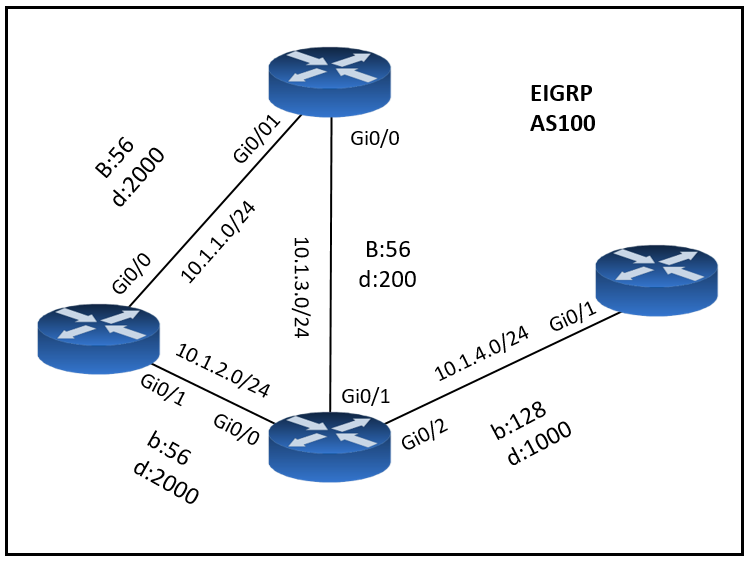
Refer to the exhibit. A loop occurs between R1, R2, and R3 while EIGRP is run with poison reverse enabled. Which action prevents the loop between R1, R2, and
R3?

Refer to the exhibit. A loop occurs between R1, R2, and R3 while EIGRP is run with poison reverse enabled. Which action prevents the loop between R1, R2, and
R3?
Split horizon is a mechanism in routing protocols that prevents routing loops by prohibiting a route from being advertised back out the interface from which it was learned. In the context of EIGRP (Enhanced Interior Gateway Routing Protocol), split horizon is typically used in conjunction with poison reverse to prevent routing loops. Since the scenario describes a situation where EIGRP is running with poison reverse enabled, enabling split horizon will ensure that routes are not sent back through the same interface they were learned from, thereby preventing the loop.
It's the correct answer, review the document provided by HungarianDish. Both Split horizon and poison reverse works together for resolve this issue
In Cisco devices, split horizon is always used along with poison reverse (via the command “ip split-horizon”) so in this question split horizon is already turned on. To prevent loop we can only use route filtering.
Split horizon is always used with poison reverse in cisco devices. therefore, the only solution is route filtering.
Split harizon is enable to prevent loop in EIGRP
I would choose A as my answer by checking other sites. Maybe Cisco is not getting to technical in this question regarding the nature of the poison reverse nature with the split horizon feature
Topology can be viewed in other dumps: https://vceguide.com/which-action-prevents-the-loop-between-r1-r2-and-r3/
The question is based on this cisco document: https://www.cisco.com/c/en/us/support/docs/ip/enhanced-interior-gateway-routing-protocol-eigrp/16406-eigrp-toc.html#anc21
EIGRP combines poison reverse and split horizon to help prevent routing loops. So, if the question is seeking some general answer, then probably it is "A". Further information (about the loop or about the design) is required to give an accurate answer.
I thinks it's "A". Split Horizon, Poison reverse and feaseble condition are the mechanisms EIGRP uses to prevents loops.
https://notes.networklessons.com/eigrp-split-horizon-vs-poison-reverse
i think the given answer is correct.
First who is R1, R2, R3 and R4, second split horizon has nothing to do here because routers are not sending routes back from int. it was learned. I think B is the correct one on this case.
The EIGRP routers exchange full routing table with each other. They don't send routes back because the split horizon. So it has a lot to here
B) stub receive-only -> I would not consider it as a loop prevention mechanism, so for me this answer is excluded. It prevents Stuck In Active. https://networklessons.com/eigrp/eigrp-stub-explained https://networklessons.com/eigrp/eigrp-queries-and-stuck-in-active https://www.geeksforgeeks.org/configuring-eigrp-stub-in-cisco/
A is the correct answer
if the Poison reverse is enable in this case and split horizont Never advertise a route out of the interface through which it was learned, the route is advertise in otrer interface so route filtering is the best answer D.
Poison Reverse is automatically enabled with Split Horizon, you cannot manually enable Poison Reverse. So if the question indicates a loop occurs while Poison Reverse is enabled, then A is not the right answer. Also, all the neighbors are form through different interfaces so the concept of SH doesn't apply anyways, it's only for multipoint interfaces e.g. DMVPN. We don't know which one is R3 to say stub receive-only can avoid the loop, even though it could help. Route tagging works with redistribution so it's not the right answer. Route filtering is the only answer I can think it's right, you can set up a prefix list and filter out routes coming from a neighbor and avoid loops.
A is corerct